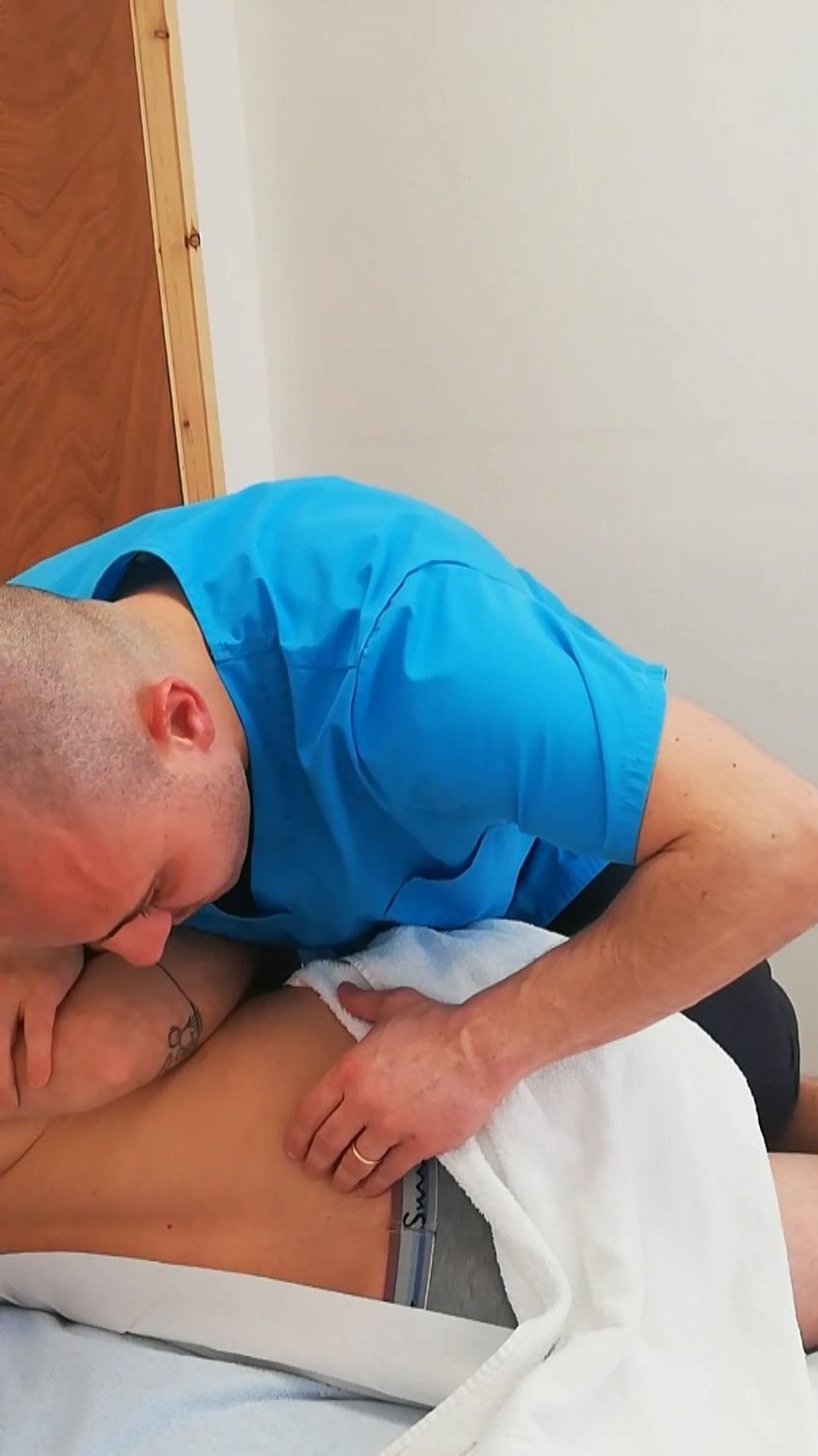 Sacroiliac joint dysfunction is an umbrella term used to describe any pain associated with the sacroiliac/sacroiliac joint (SIJ).
The joint is very solid, and has a minimal amount of movement in it. The joint
can become very stiff and painful, or can become hypermobile. The SIJ can also suffer with osteoarthritis.
As with a lot of the other joints in the body, the sacroiliac joints have a layer of cartilage that covers the
bone.
This cartilage allows you to move the joint, as well as functioning as a shock absorber that sits
between the bones. When the cartilage becomes worn or damaged, the bones begin rubbing against one
another causing osteoarthritis. Due to the osteoarthritis, the sacroiliac joint ends up having a dysfunction.
Degenerative arthritis will often occur in the sacroiliac joint, just like it will in various other weight-bearing
joints in the body.
Sacroiliac joint dysfunction is an umbrella term used to describe any pain associated with the sacroiliac/sacroiliac joint (SIJ).
The joint is very solid, and has a minimal amount of movement in it. The joint
can become very stiff and painful, or can become hypermobile. The SIJ can also suffer with osteoarthritis.
As with a lot of the other joints in the body, the sacroiliac joints have a layer of cartilage that covers the
bone.
This cartilage allows you to move the joint, as well as functioning as a shock absorber that sits
between the bones. When the cartilage becomes worn or damaged, the bones begin rubbing against one
another causing osteoarthritis. Due to the osteoarthritis, the sacroiliac joint ends up having a dysfunction.
Degenerative arthritis will often occur in the sacroiliac joint, just like it will in various other weight-bearing
joints in the body.
In cases of hypermobility, often this results after child birth, so women are particularly susceptible. The SIJ moves too much (normal movement is between 3-7mm) and this creates sheering, instability, and inflammation along the joint line. A hypermobile SIJ can also suffering with a phenomenon known as joint locking, where the SIJ gets “stuck” as a result of being too mobile.
Sacroiliac Joint Dysfunction Anatomy The SIJ is the joint between the pelvis and the sacrum. The sacrum consists of five fused vertebrae which is at the bottom of the spine. The sides of the pelvis (known as the ilium) joins into the side of the sacrum forming the sacro-iliac joint. There are also ligaments that stabilize the joint to prevent too much movement. Gluteal muscles surround the joint. The sacrum sits above the coccyx, sometimes known as the tailbone.
How to Treat Sacroiliac Joint Dysfunction:
Anti-Inflammatory Medication An anti-inflammatory medication is commonly used to help relieve pain and inflammation in the joint. However, long term use should be avoided, so keep use to 2 weeks.
Oral Steroids For short periods of time, an oral steroid is often prescribed to help treat the inflammation. This is normally prednisolone.
Physical Therapy Physical therapy has been shown to be quite helpful in dealing with this condition. Pain in the joint is often attributed to not enough movement or too much movement within the affected joint. The therapist can teach you a number of different stabilizing and stretching exercises to help minimize the pain.
Osteopathy Osteopaths use joint adjustments and manipulation to mobilize a stiff or locked sacro-iliac joint, or to attempt to alter the position of the pelvis.
Sacroiliac Belt A sacroiliac belt is a type of device that wraps around the top of the hips (buttocks) to help stabilize the sacroiliac joint, which will help to relieve some of the pain.
Tips: Good conditioning programs often help keep the joints strong and flexible.
The added weight and altered gait of a pregnant woman can place added stress on the sacroiliac joints, so pregnant women can find a lot of benefit with a SI belt.
Ankylosing spondylitis can lead to severe pain and stiffness in the sacroiliac joints. As the disease worsens, the joints fuse together and motion is prohibited.
Maintain a healthy body weight to prevent undue stress on the joints.
Try some ice and heat to your SIJ – discuss what would work best you’re your RMP therapist.